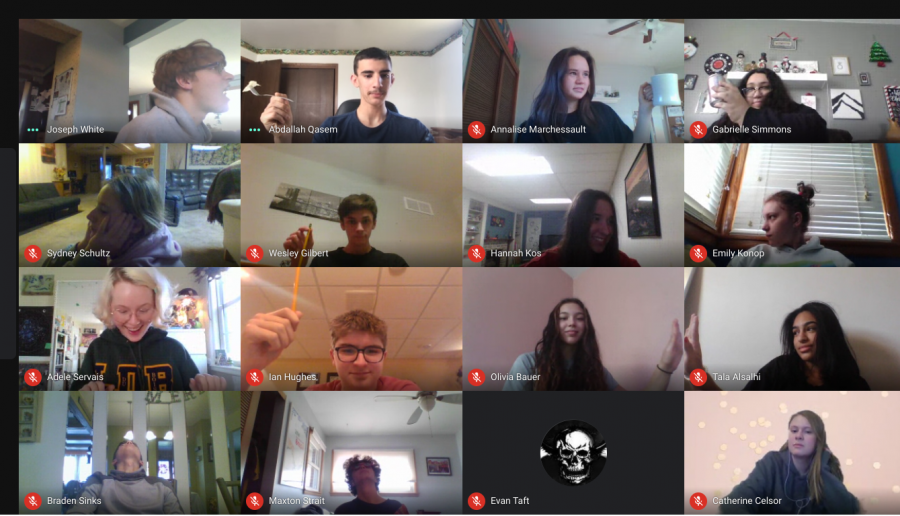Teens Cope with Virtual Learning during COVID-19
February 8, 2021
Remember when you were able to attend in-person learning at school? And remember when you were able to interact with family members, friends, and teachers without needing a mask or social distancing? Times have definitely changed due to COVID-19, and most people’s mental health, as a result, has been affected in some way.
Virtual learning has affected students in many ways. And both students and teachers are now realizing these effects.
“Many students who had mental health issues prior to the pandemic have seen their symptoms worsen during this time,” guidance counselor John Bly said. “Many other students who had not experienced mental health issues in the past have experienced them for the first time in the last 9 months.”
However, Adele Servais, a senior at Greendale High School, explains that while virtual learning was frustrating, it has not affected her mental health, as much as the lack of social interaction that in-person school has.
“Humans are social creatures, so when we are so suddenly removed from our usual environment of almost 1,000 people in one building and placed in our houses, alone, there is no way that there could not be negative effects,” Servais said.
To make virtual learning as less stressful as possible, teachers have elaborated on lessons and relaxed due dates. This allows for students to take a break when things get too stressful instead of having to push through an assignment because of a due date.
“I have been much more forgiving with late work than in the past. Deadlines matter but making sure my students are OK and not stressed out matters far more,“ German teacher Linda Havas said.
Teachers have also come up with fun ways that allow students to interact with each other during virtual learning, which provides multiple benefits. Interacting with each other is of vital importance to growing and developing kids and teens.
“I try to start each class with a question of the day. Students in AP Environmental Science have commented that it makes them more likely to talk and ask questions during class,” AP Environmental Science teacher Julie Hahm said.
Aside from teachers changing their curriculum, students have also found ways to cope with the stress of being inside and alone all the time.
“I learned to manage my stress in the sense of making more art out of it, I’m a self-taught artist and I spend hours teaching myself what I know now,” junior Kayla Patterson said.
The lack of social interaction in everyday routines has led to students becoming frustrated and stressed. They begin to yearn for the social interaction we had at school before COVID-19.
“Social interaction in a school setting allows us to relieve stress, it allows us to have fun, and it allows us to collaborate,” Servais said. “And, really, when it comes down to it, I don’t think ‘academics’ and ‘social interaction’ should be separated at all. Learning is social, and being social is learning.”
